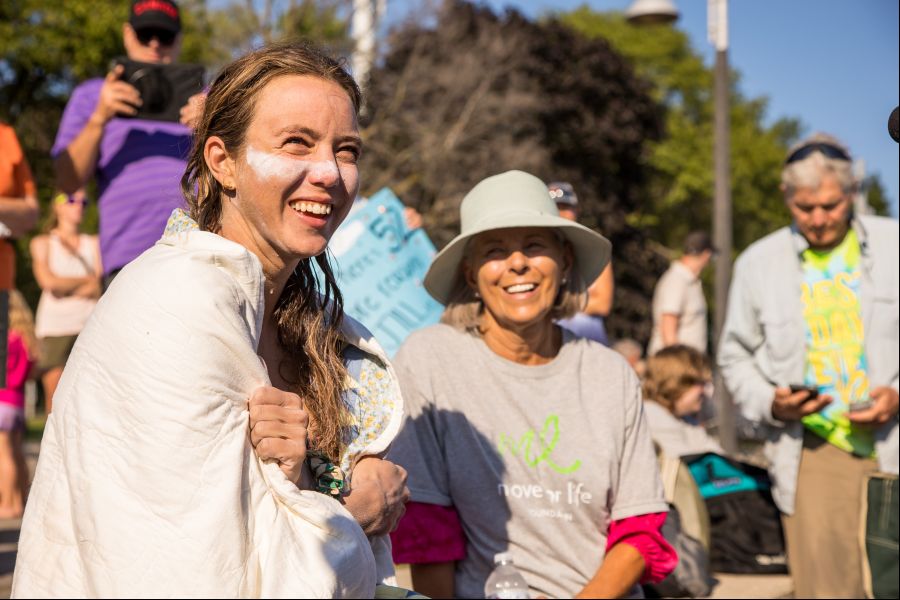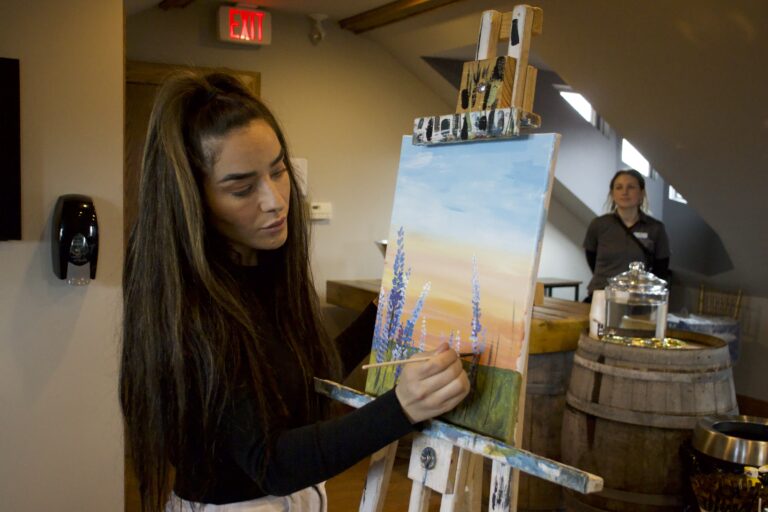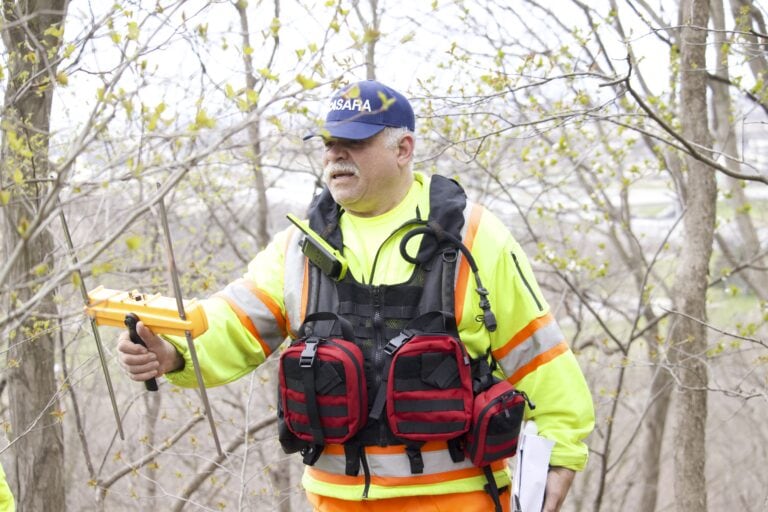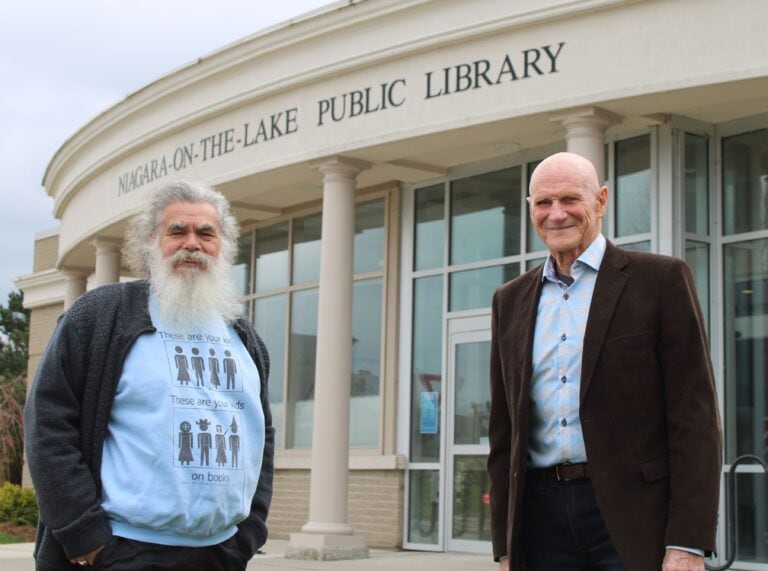Jillian Best is latest marathoner to complete arduous overnight swim
J. Richard Wright
Special to The Lake Report
Watching 34-year-old Jillian Best walk carefully over stones into the cold, black waters of Lake Ontario at 11 p.m. on Tuesday, Aug. 3, I thought: "Go Jillian!"
However, this quickly morphed into a nervous, "OK, that’s far enough. Come on back."
Probably understandable because ahead of this courageous young woman was an 18-hour, 52-kilometre swim from Queen’s Royal Park in Niagara-on-the-Lake all the way to Toronto.
“I was totally ready for this,” said Best. “I had trained for a year in both aquatic centres and very cold lakes, sometimes surrounded by snow. I vowed to myself that, whatever it took, I would complete the swim.”
As executive director of the Move for Life Foundation, and having received a liver transplant at London Health Sciences Centre in 2016, Best was attempting to become the first organ transplant recipient to swim across Lake Ontario.
Her goal was to promote organ donor awareness and help raise money to decrease wait times for organ recipient candidates.
But, this night, as her three support boats, lit with strings of coloured lights, manoeuvered into place, Best good-naturedly joked with her family and a small contingent of supporters who had come to see her off.
The 40-foot lead boat, captained by Christine Arsenault, would set the course while two smaller boats, containing, among others, coach Benoit Raymond, swim master John Scott and London-based transplant hepatology specialist Dr. Mayur Brahmania, would complete a V-formation and provide food, monitoring and safety checks.
Without fanfare, Best suddenly leaned into the cold water and pushed off to begin her swim.
In fact, the temperature of Lake Ontario that night averaged 21 Celsius (69.8 ) which posed the very real danger of hypothermia.
To help combat this, Best was covered in “swimmers grease” a mixture of lanolin, Vaseline and Desitin. In addition, her movements would create energy and help maintain her desired body temperature. “Fortunately, when you enter cold water, the grease doesn’t slough off,” she said. “It hardens and provides long-term protection.”
For additional protection and monitoring, prior to the swim, Best had swallowed a pill-like, core temperature sensor. “Every four hours my swim master would ask me to roll onto my back while he held a contactless digital thermometer to my stomach to measure my core temperature. It stayed at 37 C except for one time, and warm liquids quickly brought it back up.”
To replace the energy depleted by swimming, every 40 minutes Best would “take a feed.” The rules, however, didn’t allow her to touch the boat for even an instant.
“I had to be self-supporting in the water at all times. My crew would tie a rope to a bottle and throw it to me in the water. We also used squeeze tubes for baby food, which is high in nutritional value. For more solid food, like a banana, they used a lacrosse stick to hand it to me.”
While she swam, Best said she had lots of time to think about her organ donor, and his or her family, who had saved her life through registering to be a donor. Also, the doctors and nurses who performed the transplant and cared for her afterward.
In addition, she thought about her husband Zach, her family and others who looked after her with such love and care. Finally, her 13-member swim crew who, individually, and as a team, were contributing so much of their time and skills to enable her to make the crossing. “Without them, none of this would have happened,” she said.
Other thoughts included how far she had come from being so sick and weak from her disease, hereditary hemorrhagic telangiectasia (HHT).
“My mom had two liver transplants so I understood the challenges I was facing in recovery.” It took Best two months to marshal enough energy after the surgery to enter the water and use swimming to build back muscle mass and stretch ligaments and tendons.
With the Great Lakes classed as inland seas, she was lucky to have calm waters during her crossing, though she encountered a few swells. “At one point, with about 15 kilometres left to go, I ran into an offshore current. My swim master John Scott knew exactly what to tell me – nothing. I didn’t realize that for almost two hours I was pretty much swimming in place. I didn’t advance at all.
“We started at 11 p.m. so that I wasn’t swimming into the night the next day,” she says. “They told me I was averaging a pace of 100 metres every two minutes. And, for most of my swim, 60 strokes every minute.”
Just 18 hours and 36 minutes after she pushed off, Best made her last stroke and arrived at Marilyn Bell Park in Toronto. Doing the math of 60 strokes per-minute meant she had made more than 66,000 swim strokes.
Why put yourself through such an arduous undertaking? “I really wanted to give something back to the transplant community who gave me my life back,” said Best.
“That’s why I founded the Move for Life Foundation to raise awareness and money for the transplant community. My wonderful swim team and I feel it was all worth it.”
Readers can visit moveforlifefoundation.com to learn about organ donation or support her efforts. To register to become an organ donor, please visit beadonor.ca.










